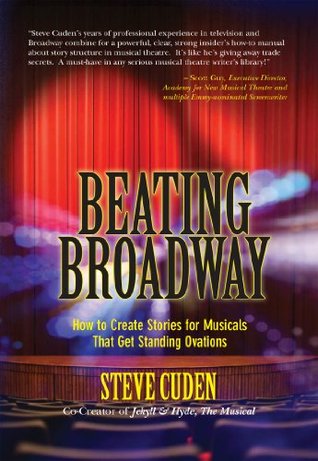Kindle Notes & Highlights
Even on stage, visual images are worth a thousand words. Here’s another cliché: seeing is believing. Think visually!
DEVELOP A LOGLINE I begin by writing a logline—a two to three line summary of the whole story. A great logline describes the beginning, middle, and end of the tale. It will include the protagonist, his goal, an indicator of the conflict he endures, and the resolution. This takes skill to pull off well in a three-line paragraph, but can be mastered by writing many such synopses. Here’s an example: When a brilliant doctor discovers a chemical mixture that he believes will cure madness, he is denied the right to experiment on inmates of the insane asylum. He opts to try the chemical on himself
...more
WRITE A PREMISE When I think I understand where the story will go, I write a premise, which runs anywhere from two to five prose pages. The premise works out the story in slightly more expansive strokes than the log-line. This helps me to see if the story really is worthy of development.
Next I create a beat outline, or a fully developed treatment, or both. A beat outline denotes in short, numbered paragraphs all of the major moments and actions found in the story.
A treatment is typically a much longer prose telling of the story. Treatments may run anywhere from ten to forty pages or more. I think that drafting more than twenty-five pages is not likely to gain you any real advantage.
Once I feel confident that the story is ready for action and dialogue to be added, I begin to write the script. This is when a lot of the magic happens, when you add flesh to the bones. The play must be written in order to fully realize the characters, how they will interact with one another, their emotional beats, and the details of what actually happens during the course of the show.
Once you have a completed script, it is now time to look for emotional moments or whole scenes that can be replaced with songs. Look for important turning points for the characters, for highs and lows. Try to find moments that expand the audience’s understanding of the characters. Try to find moments that dig deeper into the souls of the characters while simultaneously moving the story forward.
Most of us have to carve and mold and bend and toss out and start over and whittle and apply a bit of verbal putty and chip away and buff and polish and mold some more before we polish and polish again. Turning in a “first draft” for me usually means no less than ten drafts to get it to a “good enough” state to show others. Think of your first draft as gathering the clay needed to carve a sculpture. The clay is then formed into a rough shape. It is raw and maybe oddly misshapen. You must turn it into something beautiful. That is what happens during numerous revisions and refinements.
the entity that we call a “musical” exists in three major movements comprising the story’s beginning, middle, and end. Individual scenes, which may include songs or dances, further delineate those movements. A scene frequently serves as a single narrative beat. But scenes can be broken down further into more such beats. Any way you stack it, entire scenes and the beats within them are the bricks of which whole stories are constructed.
Therefore, laying out a story beat-by-beat is the simplest way to piece together a tale that an audience can easily follow. Beats represent moments experienced and actions taken that the protagonist and the other characters encounter along their way. Step-by-step there is a sure pathway to tread. In a well-constructed story you can’t skip over any necessary beats or the plot will be hard to follow, feel incomplete, or both. Just as true, too many beats, or superfluous beats will likely lead the audience to boredom.
Narrative beats are different from the kinds of beats actors refer to when they break down a script for textual analysis. Actors break scenes down into “emotional” beats, and there can be any number of them within one scene. Narrative beats tend t...
This highlight has been truncated due to consecutive passage length restrictions.
When you develop a narrative beat sheet—as will be exemplified in the remainder of this book—you wind up with a kind of truncated, shorthand, prose retelling of the story broken into its most essential, elemental moments. This should communicate the thread of the story so that it can be followed and understood as it moves inexorably forward, but without all the fine detail that must be added in order to form a fully scripted libretto.


